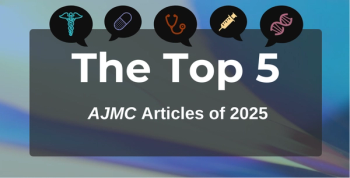
Survival Differences Seen Among Children With Retinoblastoma in European Countries
Key Takeaways
- Retinoblastoma incidence in Europe was stable at 4.0 per 1 million children aged 0 to 14 years.
- Survival rates varied, with a 97.8% 5-year survival overall, but lower in Bulgaria and Estonia.
Despite the incidence of retinoblastoma remaining consistent throughout Europe, different countries had differing rates of survival.
The incidence of
RB affects approximately 3.4 to 42.6 cases per 1 million live births worldwide, with the US having an incidence of 11.8 cases per 1 million.2 RB can affect a child’s survival if it is not addressed and treated, which makes early diagnosis important to save a patient’s life and their vision. The epidemiology of RB has been studied in the past in single countries, with Europe notable for seeing an increased trend from 1978 to 1997. However, survival rates have also increased, with a 97% 15-year survival rate in Europe. This study aimed to update these numbers with an analysis of the incidence, survival, and occurrence of subsequent malignant neoplasms between 2000 and 2013.
This study used the European Cancer Registries project to collect population-based data from European cancer registries. All data from January 2000 to December 2013 were obtained. Patients aged 0 to 14 years diagnosed with RB from 81 cancer registries in 31 European countries were eligible for the study. All follow-up data through December 2014 were included. Demographic data included sex, date of birth and/or age at diagnosis, vital status and date of death, date of diagnosis, date of last vital status attainment, occurrence of a following primary tumor, and geographic region.
There were 3262 patients included in the study, with the mean (SD) age of the cohort being 1.27 (1.63) years and most patients being male (52%). Bilateral lesions were found in 28.4% of the 2712 cases with information on laterality, and 96% of the cases were diagnosed within the first 5 years of life.
The overall incidence rate in Europe was 4.0 (95% CI, 3.9-4.1) per 1 million children aged 0 to 14 years. Denmark, Cyprus, and Austria had rates lower than 2.0, whereas Belgium had a rate higher than 6.0. Sex did not have an effect on incidence rates, with men having a rate of 4.2 (95% CI, 3.9-4.5) per 1 million compared with women who had a rate of 3.9 (95% CI, 3.7-4.1). However, children aged 0 to 4 years had a higher rate (10.6; 95% CI, 10.2-11.0) vs children aged 5 to 9 years (0.4; 95% CI, 0.3-0.5). Lower incidence rates were also found in the Eastern European region compared with the other 4 regions.
The 5-year survival was estimated at 97.8% (95% CI, 95.5%-98.9%) in the European Union overall; 10 countries had a 5-year survival rate of 100% whereas Bulgaria and Estonia had survival rates of less than 70% and 80%, respectively. Survival over 5 years improved overall in the children aged 1 to 4 years across the 13 years of the study. Hematological tumors and bone and soft tissue sarcomas were all found to have an increased risk of occurring.
There were some limitations to this study. RB stage only had partial data available, and there was a latency in data collection due to the scale and centralized nature of the study. Further, all registries did not provide data on all periods included in the study, and genetic predispositions could have affected the results of the study.
The overall incidence of RB was found to be stable throughout Europe at approximately 4.0 per 1 million children aged 0 to 14 years between 2000 and 2013, with overall survival relatively high across Europe. Improving RB surveillance can help to better diagnosis stage and primary treatment for RB to further improve survival and early diagnosis.
References
1. Virgili G, Capocaccia R, Botta L, et al. Survival and health care burden of children with retinoblastoma in Europe. JAMA Ophthalmol. Published online October 10, 2024. doi:10.1001/jamaophthalmol.2024.4140
2. Chang L. Retinoblastoma. EyeWiki. August 27, 2024. Accessed October 14, 2024. https://eyewiki.org/Retinoblastoma
Newsletter
Stay ahead of policy, cost, and value—subscribe to AJMC for expert insights at the intersection of clinical care and health economics.








































